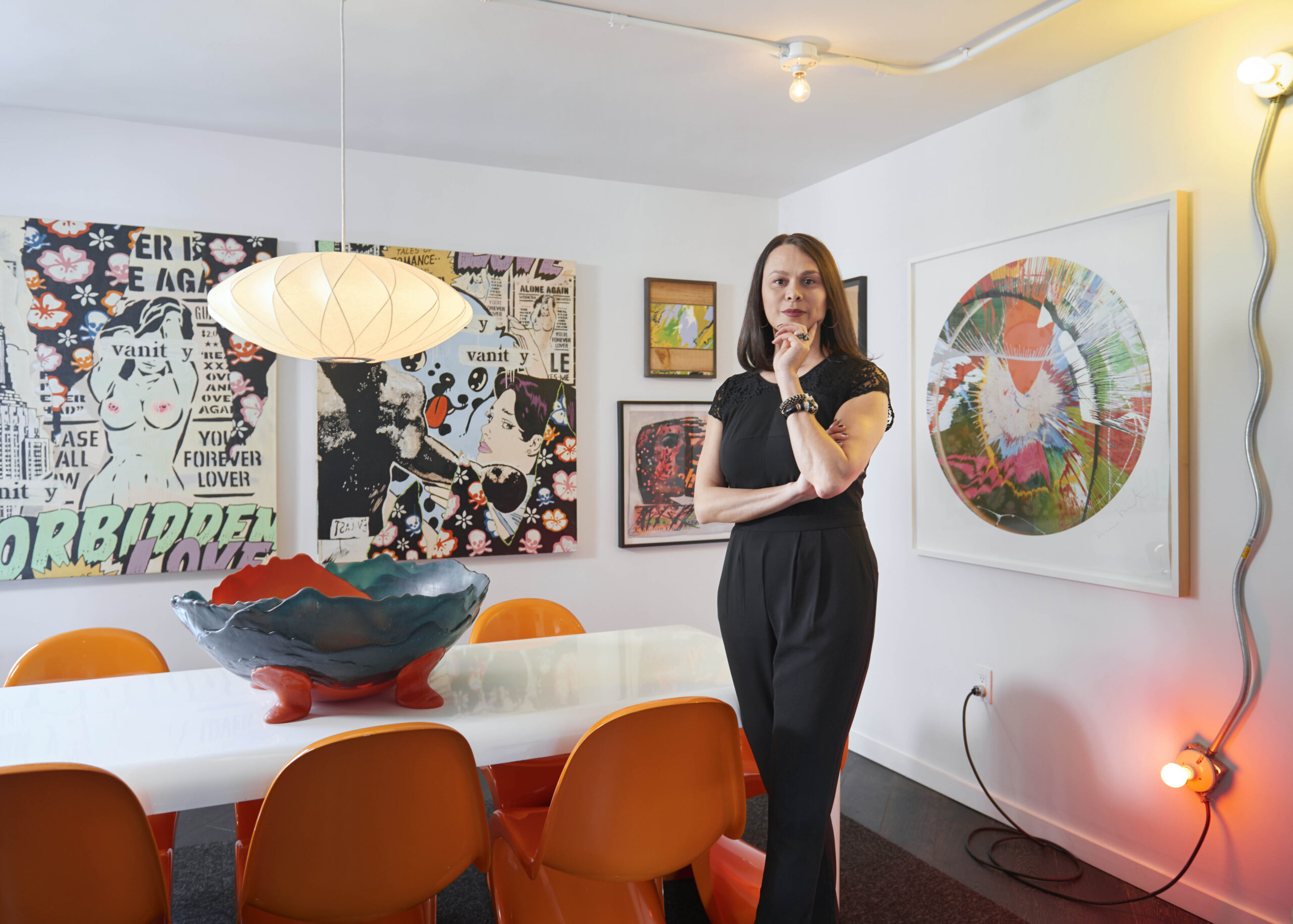Originally Published in Long & Foster’s Luxury Homes Magazine, By Max Yampolsky
NATALIE KATES-FERRI’S FOUR-PRONGED APPROACH WITH ART AT HER NUCLEUS
The NYC-based curator, collector, gallerist and philanthropist Natalie Kates-Ferri runs her business and ecosystem with an art agenda commonality at the core. The four independent and definitive roles she encompasses have solidified her as an international go-to tastemaker.
With a keen eye for undiscovered artists and forward-thinking trends, Natalie enables her clients to achieve their personal and business objectives through leveraging various forms of art and style. If you want to know what’s hot, what’s not, and what (and who) hasn’t been discovered yet the Style Curator is about to tell you!
Across a stark white metal powder-coated Ferro Table by Piero Lissoni with the most curvaceous corners, we settle down into equally curvaceous Verner Panton S chair by Vitra in flip orange. There’s nary a sharp corner or edge in the place-a testament to her free form yet curated living.
While an invitation to one of Natalie’s famed dinners is a prized happening of Fellini-esque proportions (I must admit this writer has been to her place on numerous occasions), amidst themed tablescapes and a kaleidoscopic climax of art, tonight was a casual cool conversation. Natalie is ever the hostess, and my fresh baby greens and cherry tomatoes were drizzled with extra virgin oil from Puglia and the tuna salad placed atop retained the perfect amount of mayo.
It’s all curated just right while retaining a harmonious juxtaposition-from the way the paintings are hung, and art objects displayed, to the herringbone pattern on the black floor, to the tuna salad. The balance of all things in her ecosystem feels aligned, it’s like she’s the creator and the art is her muse.
Curator
MY Natalie, what do you look for when working and
collaborating with emerging talent?
NK The first thing I ask myself is, what am I looking at? And what is the artist trying to convey? Anybody can throw paint on a canvas or do a crafts project but if there isn’t a story behind it, then it doesn’t live. So, for me, the most important thing is to understand what I’m looking at and how that object was first thought about by the artist, and then brought into the
physical world. I find those stories compelling.
MY How do you discover the next wave of artists?
NK Birds of a feather flock together, that’s why my best resource has always been artists I have relationships with. I’m always asking artists, who do you have your eye on? Whose work is pushing the envelope and interesting? What other artists should be on my radar?
ANYBODY CAN THROW PAINT ON A CANVAS OR DO A CRAFTS PROJECT BUT IF THERE ISN’T A STORY BEHIND IT, THEN IT DOESN’T LIVE
MY And what curatorial advice would you give an artist on how to build a sustainable career?
NK The first thing I would say to artists is learn the business of being an artist, because it is a career. A lot of artists have an innate sense of creativity, but most of them are lacking a business sense. It doesn’t come naturally for lots of artists, but it’s something that can certainly be learned and strengthened over time.
MY What is one corporate art collaboration you’re the proudest of?
NK I have worked on so many corporate art projects, but the one I’m most proud of is with Galeria Melissa, a Brazil-based client, that makes custom shoes with sustainable plastics and they have an amazing store here in Soho designed by Pascali Semerdjian Architects. In this collaboration I looked at the client’s DNA, in this case plastics. Therefore I curated a site-specific exhibition titled PLASMATIK, where six artists created unique works of art in various plastics.
You can read the magazine online now by clicking here.
